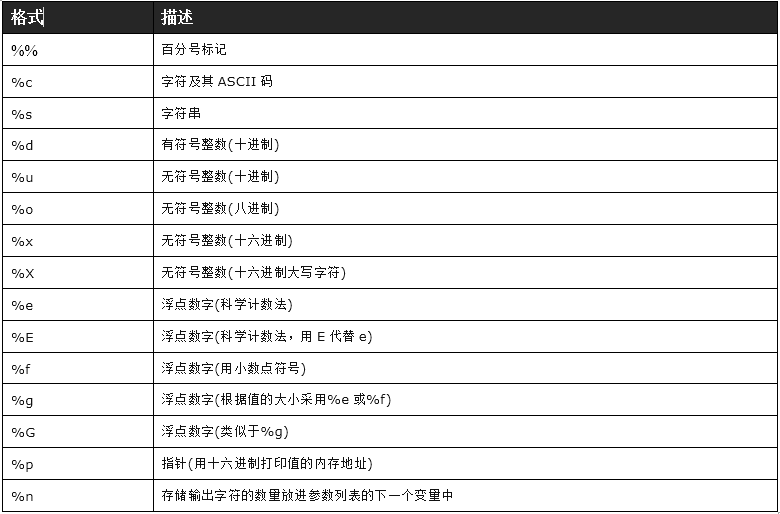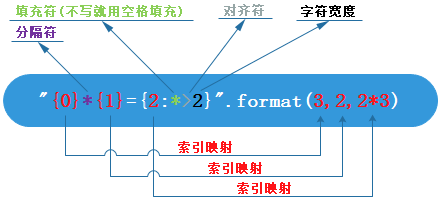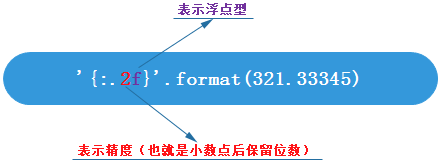Python3 | 字串格式化 format 和 % 的使用
Python3 字串格式化
字串的格式化方法分為兩種,分別為佔位符(%)和format方式。佔位符方式在Python2.x中用的比較廣泛,隨著Python3.x的使用越來越廣,format方式使用的更加廣泛。
一 佔位符(%)

%d
例項(Python3.0+):
| 1 2 3 |
|
%s
例項(Python3.0+):
| 1 2 3 |
|
%f
例項(Python3.0+):
| 1 2 3 4 |
|
二 format方法
位置對映

例項(Python3.0+):
| 1 2 |
|
關鍵字對映

例項(Python3.0+):
| 1 2 |
|
元素訪問


例項(Python3.0+):
| 1 2 |
|
填充對齊
- ^、<、>分別是居中、左對齊、右對齊

例項1(Python3.0+):
| 1 2 3 4 5 |
|
例項2(Python3.0+):九九乘法表
| 1 2 3 4 5 6 7 8 9 10 11 12 13 14 15 16 17 18 |
|
精度設定

例項(Python3.0+):
| 1 2 3 4 |
|
